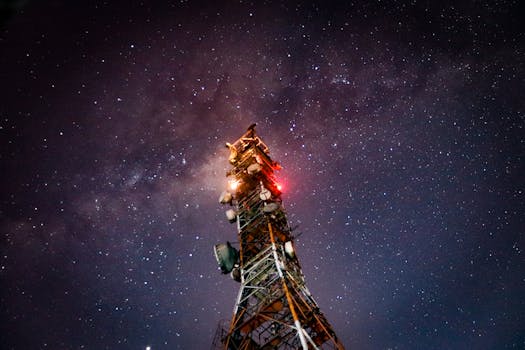
MEO Satellites: Revolutionizing Global Communication with Medium Earth Orbit Technology
MEO satellites, or Medium Earth Orbit satellites, are a type of satellite that operates at an altitude of approximately 2,000 to 36,000 kilometers above the Earth’s surface. This orbit is higher than Low Earth Orbit (LEO) satellites but lower than Geostationary Orbit (GEO) satellites. MEO satellites are designed to provide a range of services, including communication, navigation, and Earth observation, and have become increasingly important in recent years due to their unique advantages.
At the beginning of the MEO satellites era, the focus was on providing global communication services, and this is still one of the primary applications of MEO satellites today. MEO satellites offer a number of benefits over other types of satellites, including faster and more reliable connections, lower latency, and greater flexibility. These advantages make MEO satellites an attractive option for a range of industries, from telecommunications and finance to aviation and maritime.
How MEO Satellites Work
MEO satellites work by transmitting and receiving signals to and from Earth-based stations. The satellites are equipped with transponders, which are devices that receive signals from Earth, amplify them, and then re-transmit them back to Earth. The signals are transmitted on a specific frequency, and the satellites use antennas to receive and transmit the signals. The satellites are also equipped with propulsion systems, which allow them to maintain their orbit and perform any necessary maneuvers.
The signals transmitted by MEO satellites are received by Earth-based stations, which can be located anywhere in the world. The signals are then processed and distributed to the intended recipients, who can be anywhere in the world. This allows MEO satellites to provide global coverage, making them an ideal solution for industries that require international communication.
Advantages of MEO Satellites
MEO satellites offer a number of advantages over other types of satellites. One of the primary benefits is faster and more reliable connections. MEO satellites have a lower latency than GEO satellites, which means that signals are transmitted and received more quickly. This makes MEO satellites an attractive option for industries that require real-time communication, such as finance and aviation.
Another advantage of MEO satellites is greater flexibility. MEO satellites can be used to provide a range of services, including communication, navigation, and Earth observation. This makes them a versatile option for industries that require multiple services. Additionally, MEO satellites can be used to provide coverage in areas where other types of satellites may not be effective, such as in areas with high levels of interference or in areas with limited visibility.
Applications of MEO Satellites
MEO satellites have a range of applications, from communication and navigation to Earth observation and scientific research. One of the primary applications of MEO satellites is providing global communication services. MEO satellites are used by industries such as telecommunications, finance, and aviation to provide international communication services. They are also used by governments and military organizations to provide secure communication services.
MEO satellites are also used for navigation and Earth observation. They provide location information and timing signals, which are used by GPS receivers to determine their location and velocity. MEO satellites are also used to collect data on the Earth’s environment, including weather patterns, ocean currents, and land use. This data is used by scientists and researchers to better understand the Earth’s systems and to predict future changes.
In addition to these applications, MEO satellites are also used for scientific research. They provide a platform for scientists to conduct experiments and gather data on the Earth’s environment and the universe. MEO satellites have been used to study the Earth’s magnetic field, the solar wind, and the cosmic microwave background radiation.
Future of MEO Satellites
The future of MEO satellites is exciting and rapidly evolving. As technology continues to advance, MEO satellites are becoming more powerful, more efficient, and more cost-effective. New applications and services are being developed, such as the use of MEO satellites for 5G networks and the Internet of Things (IoT). Additionally, the development of new propulsion systems and materials is allowing MEO satellites to be smaller, lighter, and more maneuverable.
However, the future of MEO satellites also poses some challenges. One of the primary challenges is the increasing amount of space debris in Earth’s orbit. As more satellites are launched, the risk of collisions and interference increases. Additionally, the use of MEO satellites for military and espionage purposes raises concerns about security and privacy.
Despite these challenges, the future of MEO satellites is bright. As the demand for global communication and navigation services continues to grow, MEO satellites will play an increasingly important role in meeting this demand. With their unique advantages and versatility, MEO satellites will continue to revolutionize the way we communicate and navigate the world.




